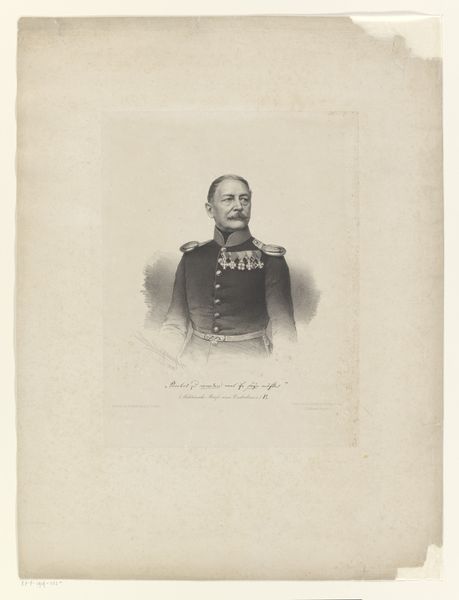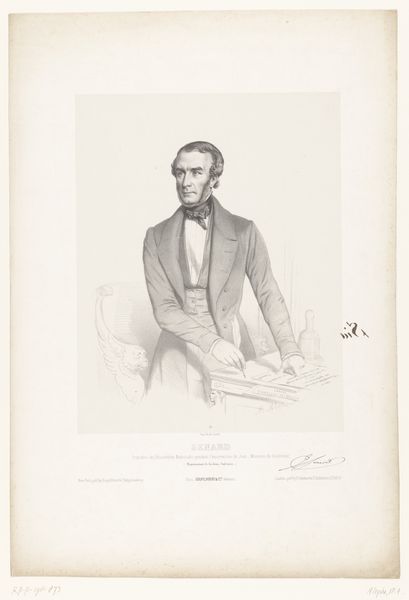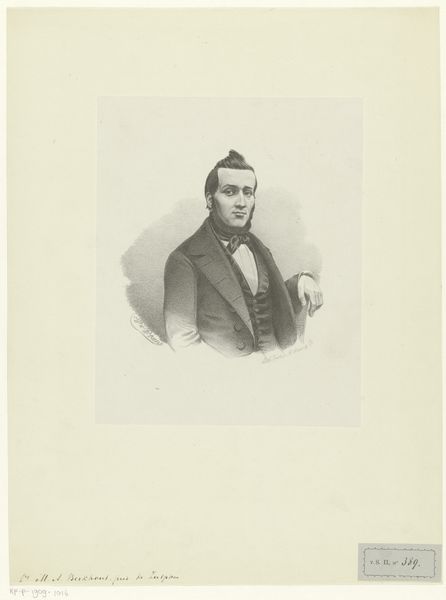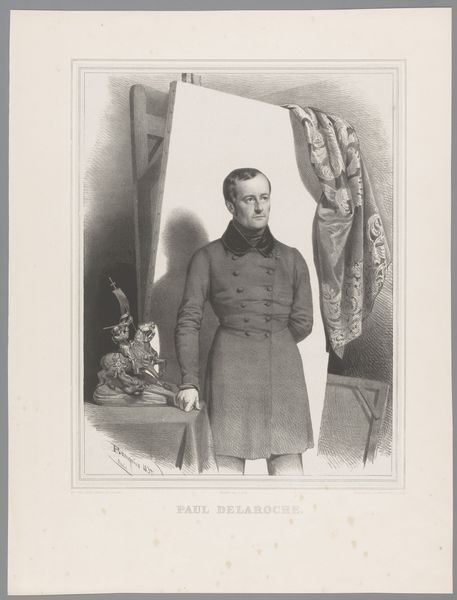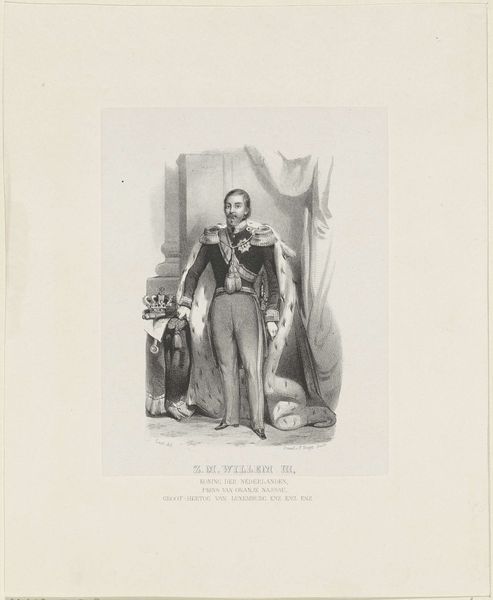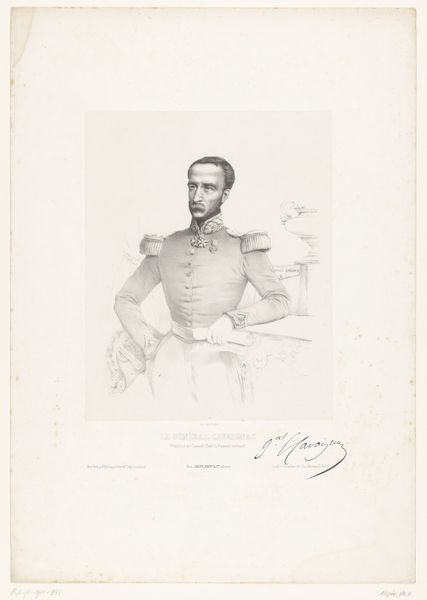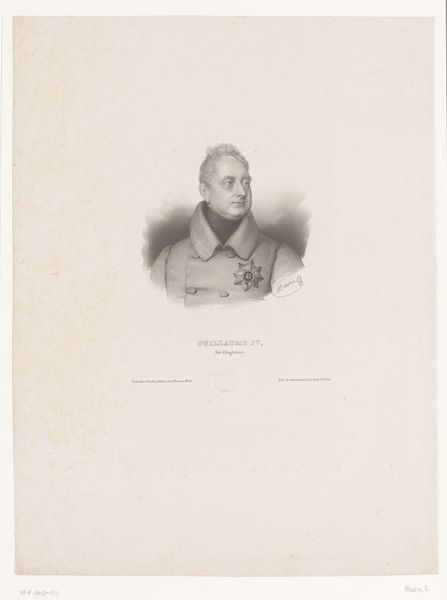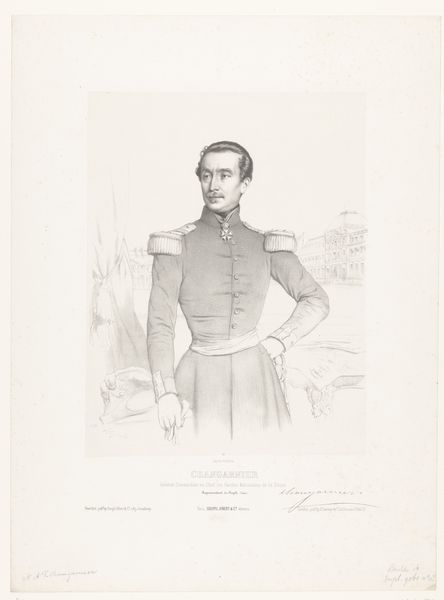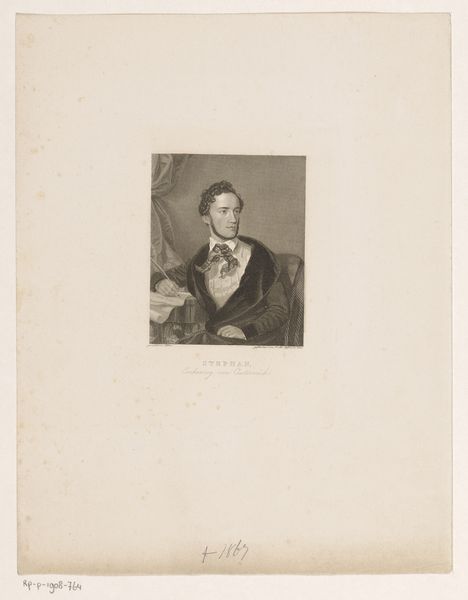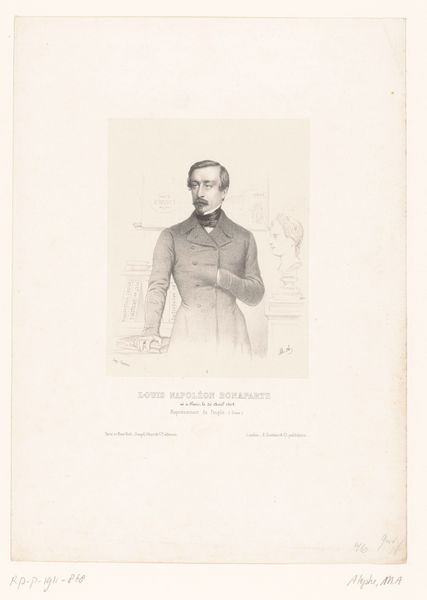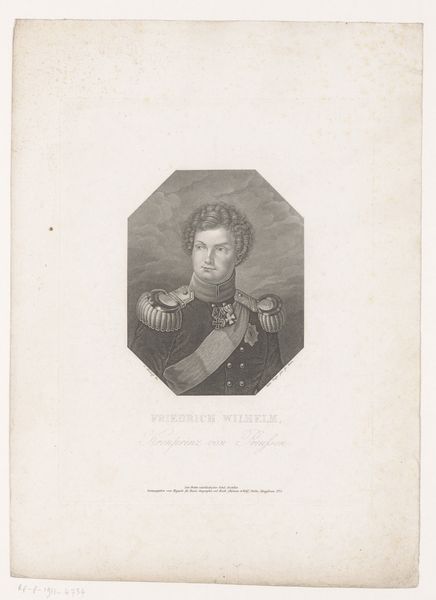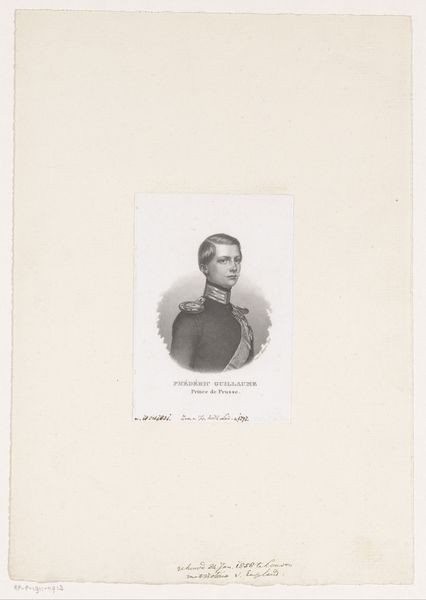
print, etching, engraving
#
portrait
#
pencil drawn
#
light pencil work
# print
#
etching
#
pencil sketch
#
old engraving style
#
pencil drawing
#
pencil work
#
history-painting
#
engraving
#
realism
Dimensions: height 562 mm, width 425 mm
Copyright: Rijks Museum: Open Domain
Curator: Here we have August Prinzhofer's "Portret van Frans Jozef I van Oostenrijk," created in 1848 using etching and engraving techniques. Editor: It strikes me as remarkably serene for a portrait of someone who would become such a significant and controversial figure. There’s a vulnerability here, almost an innocence, despite the formal military attire. Curator: Absolutely. Notice the crisp detail in the uniform's embellishments and the way his hand casually rests on the hilt of his sword. This is the young Emperor Franz Joseph, only eighteen years old when he ascended to the throne. The symbols, like the Habsburg double eagle on his uniform, point to the continuity of the imperial line, attempting to evoke a sense of stability in a tumultuous era. Editor: And what a tumultuous era. 1848 was a year of revolutions across Europe. Consider the social context: a young emperor stepping into power amidst widespread unrest and demands for change. This image, therefore, becomes an artifact of power and a symbol of clinging to tradition, even as that tradition was under intense pressure. It almost feels like a carefully constructed attempt to project authority. Curator: I agree. This portrait certainly serves as a symbolic declaration of power, employing recognizable visual markers to inspire confidence in the monarchy. Yet, I am also intrigued by the subtle choices Prinzhofer made. The light source, for instance, casts gentle shadows that soften Franz Joseph's features. There's a balance here between portraying the Emperor's might and presenting a humanized figure, someone relatable to the public. The very softness of the etching perhaps conveys an accessibility the monarchy sought. Editor: That’s interesting because that interpretation is what is deeply problematic to me. Looking at this portrait, I see the careful hand of imperial propaganda trying to create a false image of compassion amidst injustice. The symbols of authority become even more loaded when considered against the backdrop of the widespread social inequalities of the time. That sword represents the suppression of dissenting voices and maintaining power by force. Curator: I understand that perspective, but it's equally vital to appreciate the cultural context within which this portrait was created. Prinzhofer was, in essence, visually translating the concept of divine right and hereditary power into a language that resonated with the audiences of that era. Editor: Ultimately, whether seen as a genuine attempt to connect with the populace or a carefully constructed piece of propaganda, this image invites us to confront complex issues surrounding power, identity, and the enduring legacy of the Habsburg dynasty. Curator: Indeed, exploring this portrait allows us to dive deeper into both the symbolic language of the era and its reverberations on the narratives of history.
Comments
No comments
Be the first to comment and join the conversation on the ultimate creative platform.
